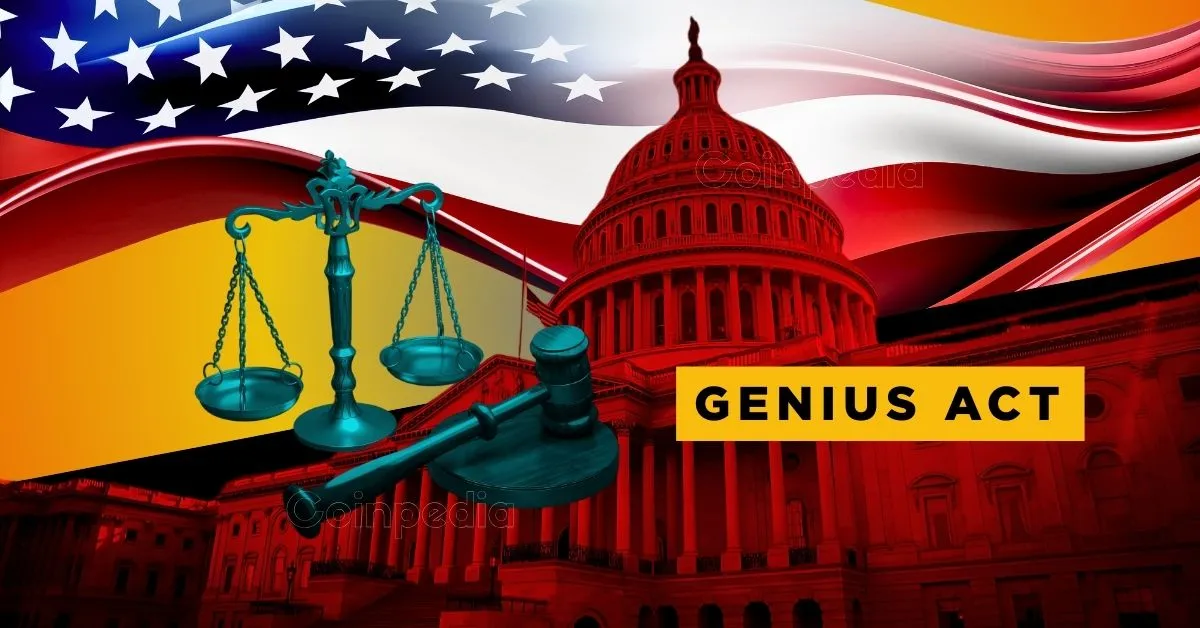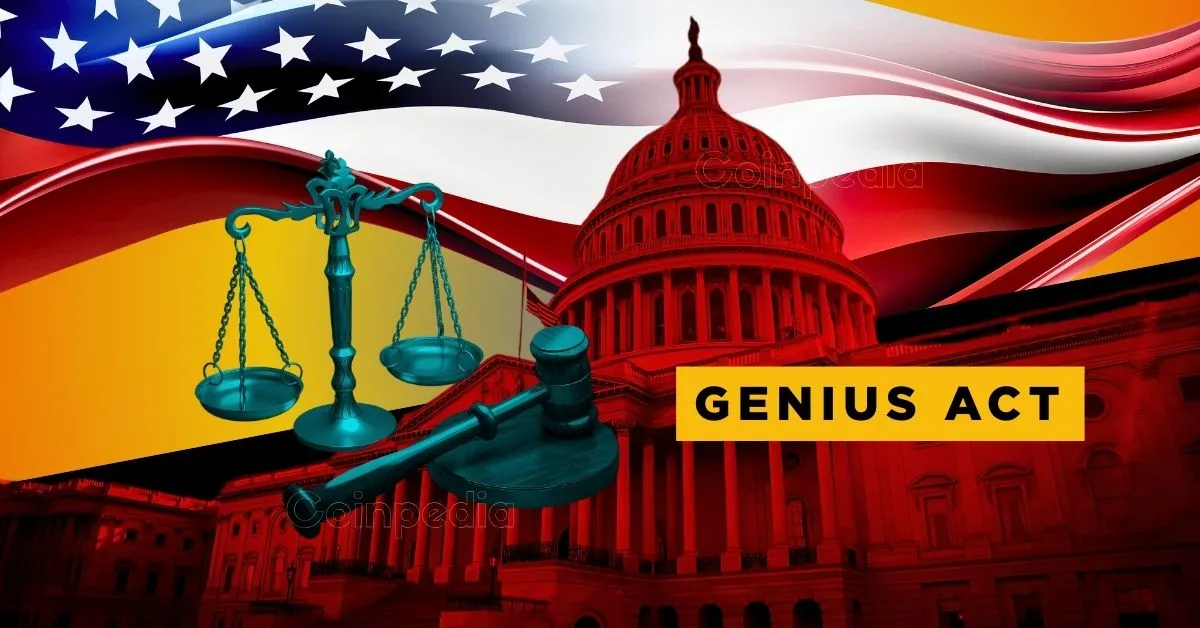Decoding the GENIUS Act: A Deep Dive into the Future of Digital Finance
The U.S. Senate has spoken, and the message is clear: digital assets are no longer on the fringes of finance. The passage of the GENIUS Act isn’t just another headline; it’s a seismic shift. For years, the cryptocurrency wild west has operated with minimal oversight, breeding innovation alongside inherent risks. Now, the GENIUS Act steps in as a pioneering piece of legislation, aiming to lasso the stablecoin market – a critical building block in the digital asset universe – and bring it under federal governance. The almost unanimous bipartisan support underscores a growing Congressional consensus: digital assets are here to stay, demanding thoughtful regulation.
Delving into the Heart of the GENIUS Act
Formally known as the “Guiding and Establishing National Innovation for U.S. Stablecoins” (GENIUS) Act (S.1582 in the 119th Congress, for those scoring at home), this bill zeroes in on payment stablecoins. These aren’t your wild and unpredictable cryptocurrencies like Bitcoin. Instead, they’re digital assets engineered to maintain a steady value, usually tied to a traditional currency like the U.S. dollar. This stability is their superpower. It allows users to leverage the advantages of cryptocurrency – think lightning-fast transactions, increased efficiency, and broader accessibility – without the stomach-churning price swings.
The stablecoin market, worth a cool $250 billion, has exploded in popularity. It facilitates transactions within the crypto realm and is increasingly dipping its toes into mainstream finance. However, this rapid growth has occurred in a regulatory vacuum, sparking worries about safeguarding investors, preventing systemic risk, and combating illicit activities. The GENIUS Act tackles these concerns head-on by erecting federal guardrails around these digital assets.
Unpacking the Key Provisions: Building a Framework for Stability
The GENIUS Act’s core revolves around several critical pillars.
- Safe and Sound Reserves: The Act mandates that stablecoin issuers back their digital currencies with reserves composed of “safe, liquid assets,” primarily U.S. Treasury securities. This is the bedrock of the bill, designed to ensure that issuers can always honor redemptions. Imagine a modern-day gold standard, but for the digital age. This requirement acts as a buffer against potential “runs” on stablecoins, similar to what can happen with traditional banks when confidence wavers.
- Redeemability Guaranteed: The bill explicitly clarifies the redeemability of stablecoins, establishing a clear and straightforward process for holders to convert their digital assets back into U.S. dollars. This assurance is crucial for fostering trust and confidence in the system.
- Federal Oversight for Private Issuers: The GENIUS Act establishes a regulatory framework specifically for private stablecoin issuers, subjecting them to federal oversight. This added layer of scrutiny aims to enhance transparency and accountability within the often-opaque world of digital finance.
- Innovation’s Green Light: While focused on regulation, the legislation also aims to nurture innovation by creating a clear and regulated pathway for private stablecoin issuance. This structured approach could encourage further development and broader adoption of these promising technologies.
Bipartisan Harmony: A Rare Moment of Agreement
The GENIUS Act’s journey to the Senate floor was marked by an impressive display of bipartisan cooperation. The 68-30 vote in favor wasn’t just a win; it was a testament to the growing realization that regulating stablecoins isn’t a partisan issue. Eighteen Democrats crossed the aisle to join forces with the majority of Republicans, a rare sight in today’s polarized political landscape. Senator Bill Hagerty (R-Tenn.) championed the bill, successfully highlighting its appeal across ideological divides.
This widespread support signals a shared understanding that regulating stablecoins is about more than just liking or disliking cryptocurrency. It’s about protecting everyday consumers, safeguarding the stability of the financial system, and ensuring that the U.S. remains a competitive force in the rapidly evolving world of digital assets. Of course, not everyone was on board. Senators like Rand Paul and Josh Hawley voiced concerns about potential government overreach and the bill’s potential impact on individual privacy.
Industry’s Perspective: A Step Towards Legitimacy
The cryptocurrency industry, often wary of government intervention, has largely welcomed the GENIUS Act with open arms. For years, the sector has clamored for clear regulatory guidelines, arguing that such rules would provide much-needed certainty, attract significant investment, and pave the way for mainstream adoption. The Act’s passage is viewed as a critical step towards legitimizing stablecoins and integrating them more seamlessly into the existing financial ecosystem.
The implications extend far beyond the cryptocurrency bubble. The bill has the potential to ripple outwards, influencing the development of central bank digital currencies (CBDCs) and accelerating the adoption of blockchain technology across various sectors. The requirement for stablecoin reserves to be held in safe, liquid assets like U.S. Treasuries could also provide a boost to the U.S. debt market, increasing demand for these securities.
Navigating the Road Ahead: Challenges and Considerations
Despite the widespread celebration, the GENIUS Act isn’t without its critics. Some argue that the bill doesn’t go far enough in addressing potential risks, particularly concerning the potential for corruption within the cryptocurrency sector. Concerns have also been raised about the influence of individuals with close ties to certain political figures and the potential for conflicts of interest.
Looking ahead, the successful implementation of the GENIUS Act will be paramount. The specific regulations crafted by the relevant government agencies will ultimately determine the bill’s effectiveness. Furthermore, it’s crucial to remember that the Act focuses solely on stablecoins. Broader regulation of the cryptocurrency market, including exchanges and other digital assets, remains a significant hurdle for lawmakers. The constantly evolving nature of the crypto landscape will require ongoing legislative and regulatory adjustments to ensure that the U.S. maintains a well-balanced approach – one that fosters innovation while effectively mitigating risk.
A Digital Finance Transformation
The passage of the GENIUS Act is more than just a regulatory event; it’s a transformative moment for the digital asset industry. It marks a clear shift from uncertainty to increasing clarity and oversight. While challenges undoubtedly remain, the Act provides a solid foundation for the responsible development and integration of stablecoins into the U.S. financial system, therefore securing USA’s position as the leader of digital finance. This landmark legislation isn’t simply about regulating cryptocurrency; it’s about actively shaping the future of finance in an increasingly digital world, and positioning the United States at the forefront of this global transformation.












